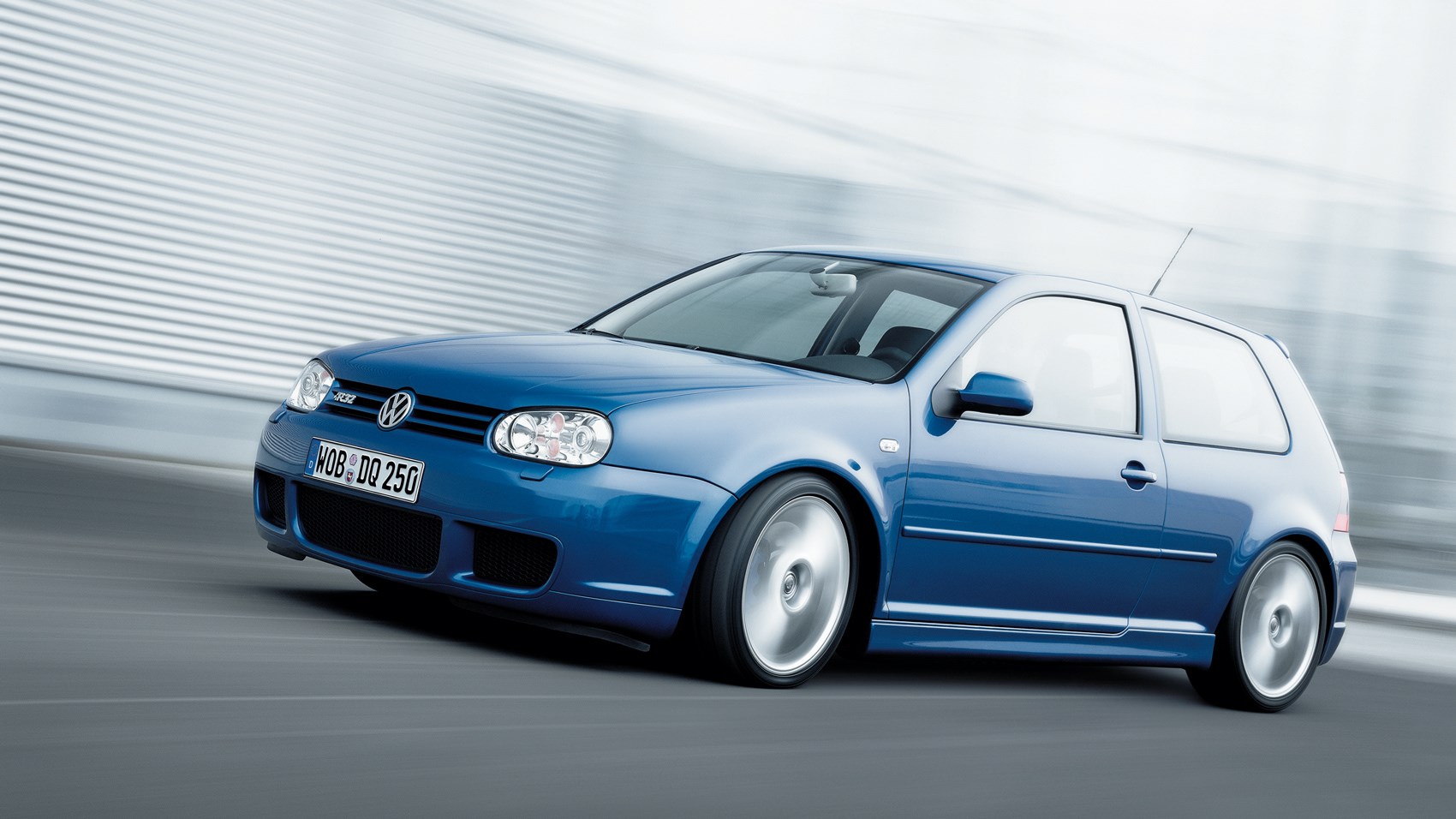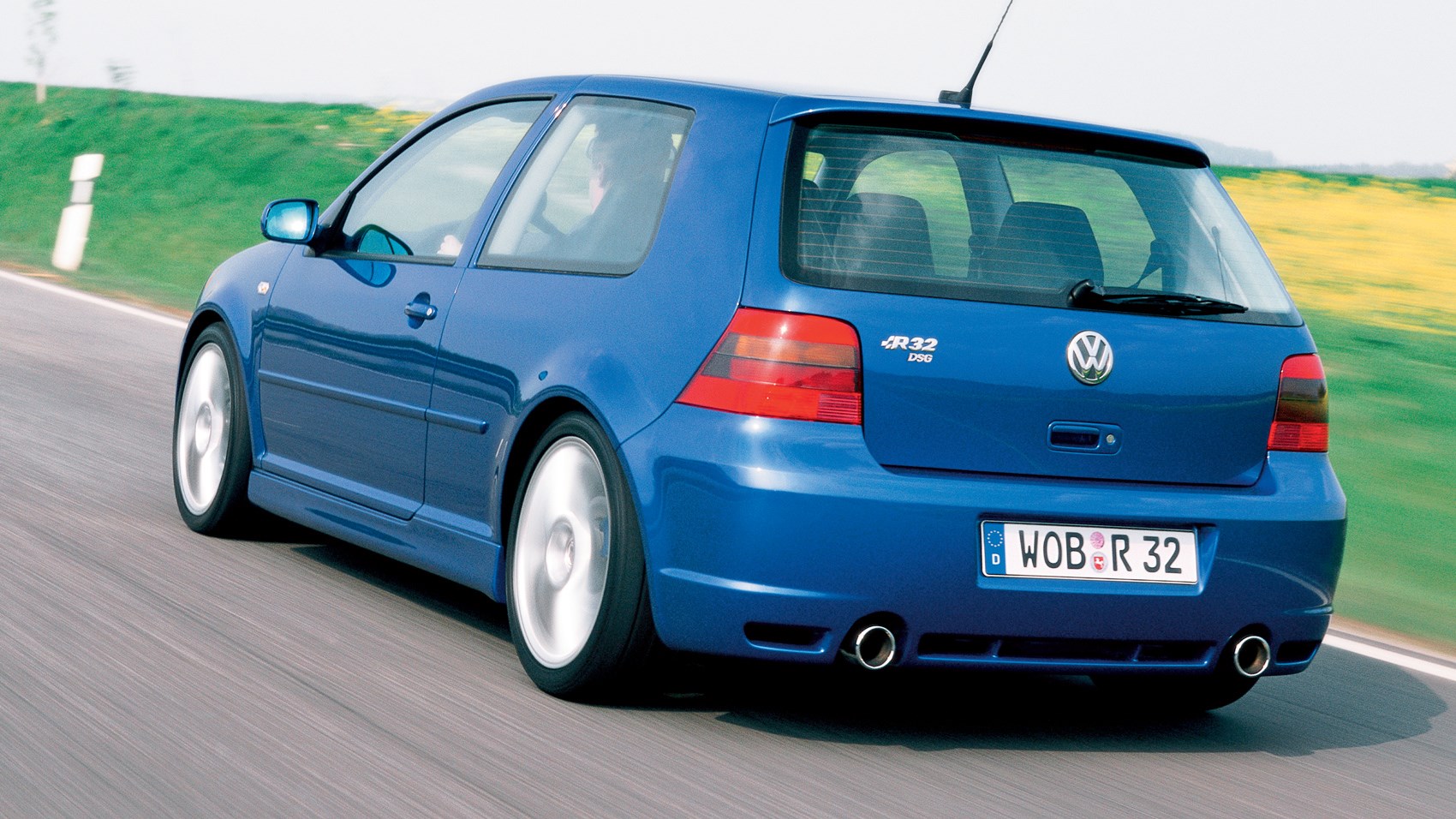► VW’s ultimate Mk4 Golf driven
► VR6 cranks out 237bhp, 236lb ft
► We drive Euro-spec DSG auto
Older website perusers and readers of CAR, look away now: I was nine years old when VW’s all-out all-wheel drive Golf R32 arrived in the UK in 2002. It ended up being one of those cars that stuck in my memory as a young lad, due in part to my growing obsession in cars but mostly as it was one of my favourite hot hatches to use in Gran Turismo 4 and Forza Motorsport.
While out at the 2018 Wörthersee festival, VW had wheeled out some of its latest performance hatches (read my thoughts on the Golf R with Performance Pack here) and some of its heritage fleet. Among those, the Mk4 R32 in Deep Blue Pearl, was there waiting. Would this be a case of never meet your heroes?
Let’s take a step back: what was so different about the R32?
The Mk4 R32 was a 2003 model-year special, designed to sit atop the Golf GTI as an even hotter performance hatch, and was arguably the start of VW’s R line of cars. In the case of the Mk4 Golf, sitting as a halo model above the Mk4 Golf GTI was a good thing.
The Mk4 GTI was widely-recognised as one of the worst Golf GTIs in the car’s 40-odd year history; it felt stodgy to drive, wasn’t that quick and hardly looked like a GTI at all. In came the R32 to save the day: ‘the most powerful and sportiest Golf of all time’. In 2002, anyway.
The 3.2-litre VR6 was simply a larger version of the tried-and-tested 2.8-litre VR6 VW already had in service, along with the brand’s Haldex-based 4Motion all-wheel drive system. In the R32’s case, a new six-speed manual was developed to handle the shove and it became the first car in VW Group’s portfolio to use the now-ubiquitous DSG (Direct Shift Gearbox) automatic, albeit in Germany only. The UK’s first DSG appetite-whetter would be Audi’s Mk1 TT V6 quattro in 2003.
CAR’s Anthony ffrench-Constant originally drove it back in the October 2002 issue.
And what about inside?
It’s as sensible as ever inside and, for the most part, has stood the test of time for what is now a 16-year-old car. R32 highlights include König sports seats, ESP, climate control, rain-sensing wipers and cruise control. The heritage car we drove also came with navigation, which after a quick fumble around with it, deducted that it was completely unfathomable, not least because it’s placed really far down the dashboard. How times have (mostly) changed, eh?

The R32’s additions were just enough to perk up a fairly drab cabin, with the seats in particular the stand out point: the part-leather, part-Alcantara pews look the part but are actually a little uncomfortable, with very firm back rests. Still, the side bolstering comes in handy when you’re going some.
And can you go some in an R32?
Well it’s not exactly slow, even by today’s standards. With the German-spec DSG equipped, the R32 claims a 6.4sec 0-62mph time (0.2sec quicker than the manual and almost as fast as a Mk7.5 Golf GTI Performance Pack) and it feels it.
The VR6 engine booms a lot from inside the cabin but sings more tunefully from the outside, with that familiar tuneful warble that’s almost like a trumpet player has fallen into an industrial-sized washing machine, mid-spin cycle. It’s a memorable mix of wail and whoosh. It’s enough to still send a shiver down your spine, especially if you’ve grown up in the era of overly-boosty 4cyl engines that dominate the hot hatch market today.

For this engine configuration, it’s actually quite rev-happy. You expect the largest lump of power to be around the mid-range, but the car actually eggs you on to wind the revs all the way up to the max power’s 6250rpm, with the DSG ready and waiting to drop the next gear in when you get there. Downshifting using the manual DSG mode’s fat aluminium wheel paddles shows up the gearbox’s biggest flaw compared to today: it doesn’t like you selecting a lower ratio mid-throttle, momentarily hurling you forward as it cuts the power. Still, that’s a minor point.
The Passat W8-derived brakes are good-ish; nowhere near as powerful as today’s modern hot hatches but they still have plenty of bite.
How’s the handling?
The R32 got its own suspension setup, with a 20mm-lower ride, bespoke 18-inch alloys from OZ and paint-smear-thin 225/40 tyres and there’s no getting around the fact that that recipe adds up to a firm ride. Even on the mostly smooth Austrian hillside roads we were driving on, the R32 hopped over small lumps and crashed over bigger ones.
There’s also the sense that the R32 is actually quite a lazy car to get around a corner. The steering is heavy by today’s standards, and you have to reattune your hand’s inputs to the amount of lock you have to put on when approaching a bend. It’s far from imprecise, mind, you just have to wind the wheel around a little more than a current-generation Golf R, and unlike the latest-generation ones, there’s a sample of road feedback from the R32’s wheels.

It’s a little nose-heavy, so you have to really regulate your gear and throttle inputs to get it to squirt around that 90-degree sweeper cleanly. Don’t use enough throttle, it washes wide; use to much throttle, it… also washes wide. There’s a thin window of success where the all-wheel drive is its most helpful but when you work hard at it, it’s rewarding to get right.
Verdict: VW Golf R32 Mk4
What you take away most from a drive in the R32 is that very little like it has been seen since; downsizing has claimed the lives of many a beefy-engined hot hatch.
The VR6’s noise and surprisingly linear shove is scintillating, and the R32 still remains a very fast hatch. The old trope of large front-engined, all-wheel drive VW Group cars remains, in that it feels a little nose-heavy and has a tendency to understeer but if you work with it it’s very entertaining. Think it’s time to browse the classifieds again…
Check out our VW reviews
